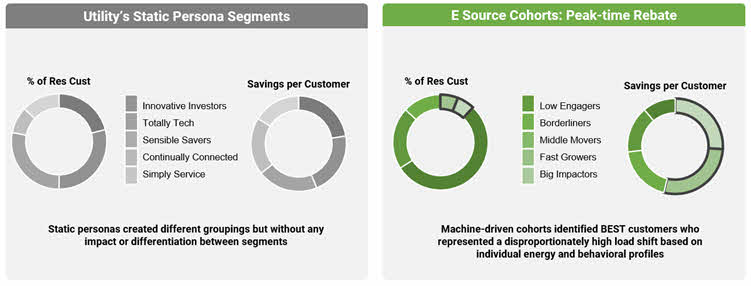Happy #EEDay2023! Energy Efficiency Day is a collaborative effort supported by energy efficiency advocacy groups around the US, including ACEEE, the Alliance to Save Energy, and the Natural Resources Defense Council. According to the official Energy Efficiency Day website, the “goal is to share tips, tools, and stories that promote the multiple benefits of energy efficiency, from lower costs to healthier homes.”
Utilities fully support this mission by offering diverse sets of incentive programs to help their customers manage energy use. But as the landscape continues to evolve, the once abundant coffers for cost-effective energy savings are beginning to dry up. This is driven, in part, by market transformation programs reaching maturity, the lingering impact of COVID-19 on discretionary income and supply chains, and technology changing the way customers interact with their utility. With so many trends impacting how customers engage with their electric utility, getting customers to participate in voluntary programs can be a major challenge. But a data-driven approach can help.
Another resource for program managers
There are several common techniques utilities deploy to increase program adoption. Increasing incentives is a common approach. This idea can be effective, but there are risks such as negative net-to-gross ratios or regulatory delays surrounding increasing incentives between filings. Another common approach is to increase marketing spend. This tactic can also prove beneficial, but it can sometimes result in wasted dollars communicating with customers who were never going to participate in the program.
But there’s another tool that’s often forgotten, data science. Data science can be harnessed to help utilities reduce the uncertainty associated with program adoption and improve marketing effectiveness. E Source has partnered with dozens of utilities to help them take their understanding of customer bases to new heights using our unique and collaborative E Source Audience of One approach. By understanding each individual customer and their unique attributes, choices, and lifestyle, utilities can identify which customers are most likely to participate in their programs. And while today’s focus is energy efficiency, our Audience of One approach can apply to a multitude of customer-facing programs.
Data science delivering results
What if you could target the smallest number of participants needed to meet your program’s goal? What if your messaging was delivered to an audience who wanted to hear about it? These are exactly the types of questions the Audience of One approach helps utilities answer using data science.
We gather and combine thousands of different pieces of data and create a true digital replica of each customer. Our models consider information such as past program participation, political views, and even frequent flyer status. And as our modeling progresses, the most important attributes will begin to surface. We then identify which customers have those attributes and are more likely to participate in the program.
What does this mean for utility program managers? Figure 1 outlines an example of how our Audience of One approach improved program performance for a utility client. The utility had some existing segmentation work in place, but it didn’t quite deliver the results the utility was looking for.
Figure 1: Static persona segmentation compared to machine-driven cohorts
Savings were evenly spread across all customer segments, but this isn’t what happens in reality. We identified a small portion of customers who represented an outsized savings potential. This allowed the utility to refine its marketing approach to target the right customers for the program.
Program success in 2024
Creativity and new thinking will be needed to deliver results as the industry and utility customers continue to evolve. Whether you’re leading an energy efficiency program, focusing on communicating with EV owners, or looking to avoid the costly capital investments needed to relieve grid congestion, data science can help! As 2023 comes to a close and planning for 2024 begins, I encourage you to consider all the tools you have in the toolbox to make 2024 the best year yet.
